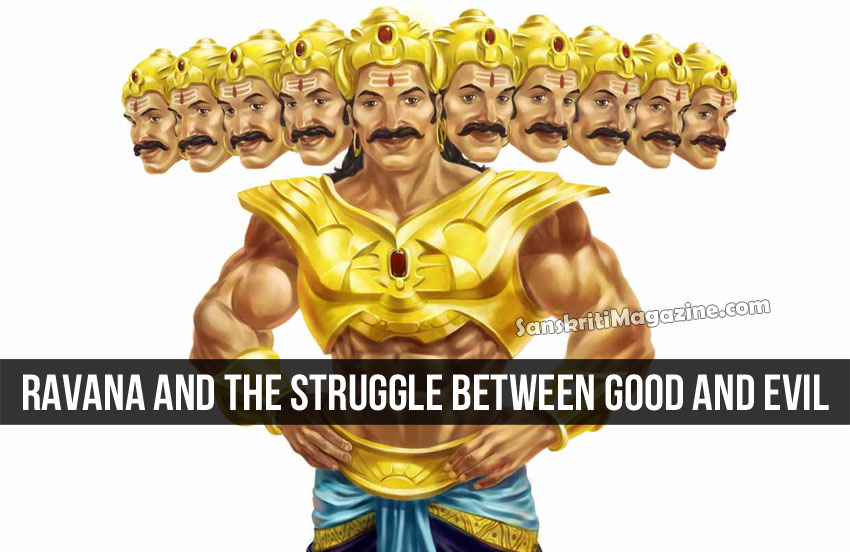I recently overheard a little boy talking to his mother about his dilemma over buying another toy for himself. As he tried to rationalize his decision, he said, “Mom, my good mind tells me to leave this toy as I have something similar, but my bad mind is forcing me to tell the good mind to shut up!”
A child’s innocent dilemma reflects the dilemma we all face between our good and bad minds. Sometimes we are aware that what we a doing is wrong, but we still go ahead. I once asked a priest, “Even if we have complete faith in God, then why does he let us do bad things? Why can’t he just stop me from wrongdoing?” The priest replied, “Before each wrong deed the God, through your good mind, sends you a signal to stop. If you listen to that signal, you are saved. But if you don’t, then after all you have your own share of karmas to deal with!”
If so much dilemma can exist between our good and bad brain, then what a terrible struggle it must have been for Ravana, the demon king with 10 heads!
Ravana was the King of Lanka (present day Sri Lanka). He was born in the age of Lord Rama. Actually, Lord Rama reincarnated in the age of Ravana to punish Ravana for his misdeeds. Ravana was the king with the 10 heads.
Ravana was born to a sage father called Rishi Vishrava and a demon mother called Kaikesi. Kaikesi was a princess from a demon kingdom, who, in order to save her dying clan, married sage Vishrava so she could give birth to sons who could take the demon legacy forward.
When Kaikesi was pregnant, sage Vishrava, using his scientific knowledge in that era, foresaw that she would give birth to three boys and one girl. Of the four children, only one son would have traits of the sage, and the other three would fulfill their mother’s wish of taking the demon legacy forward. And so they did.
Ravana was the eldest of the four. He was extremely intelligent, sharp, learned and knowledgeable. Sage Vishrava developed a formation of ten crystal balls which had the capacity to multiply a person’s head by ten times if tied around the neck. From the sage through Kaikesi, Ravana became the owner of this great scientific piece of marvel.
Ravana is still famous, or infamous, for kidnapping the wife of Lord Rama, who then fought an epic battle across the Indian Ocean to win back his wife from the demon king. All along the battle, Ravana knew what he was doing. He was a great devotee of Shiva, he was a great dancer, musician and a great king. His scholarly capabilities were par excellence. He mastered the Vedas, and wrote several religious text. He used the power of the ten minds well in all his scholarly pursuits.
But Ravana miserably failed in one aspect. The aspect of listening to that one signal of God to give up on his misdeed of abducting the Lord’s wife and accepting defeat. He instead fought against The Lord himself and died. Ravana did not want to give up on the opportunity of being killed by The Lord himself. In death, he announced his victory over The Lord by saying that he was luckier as he was going to heaven, the abode of The Lord even before him.
We are lucky we don’t have ten heads to handle. Just one gives us enough trouble! All that we can do is use this one mind carefully and intelligently. Listen to that brief signal before each deed. Find answers to our dilemmas within.
~Manu Arya










